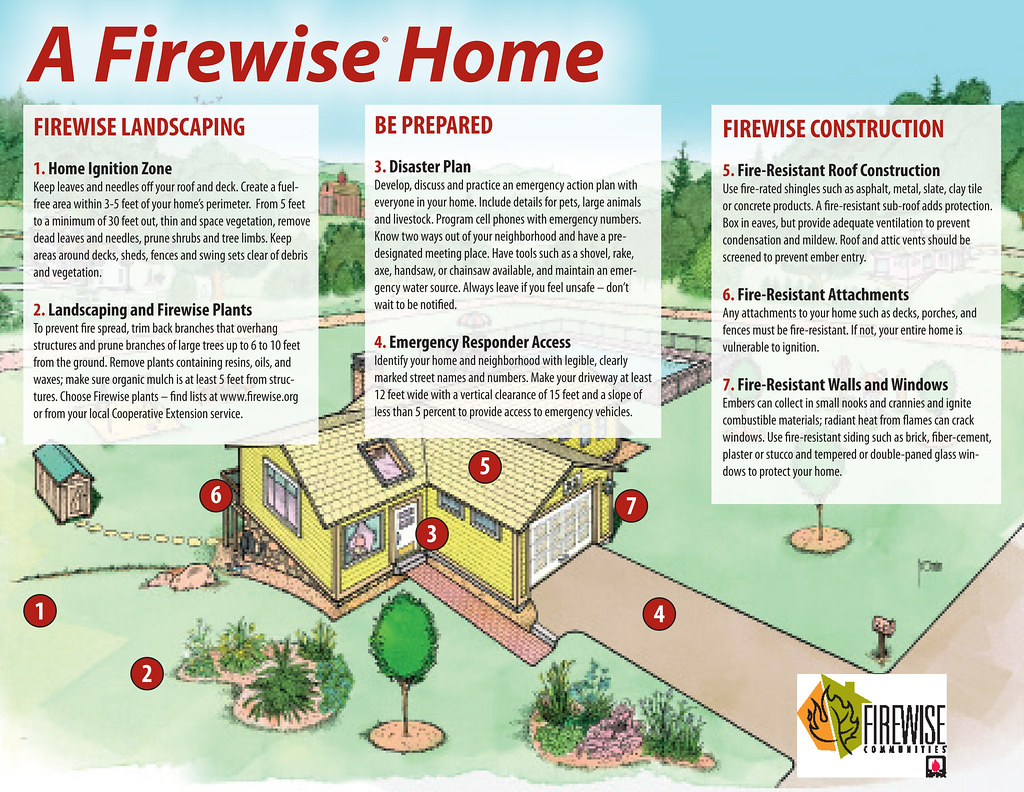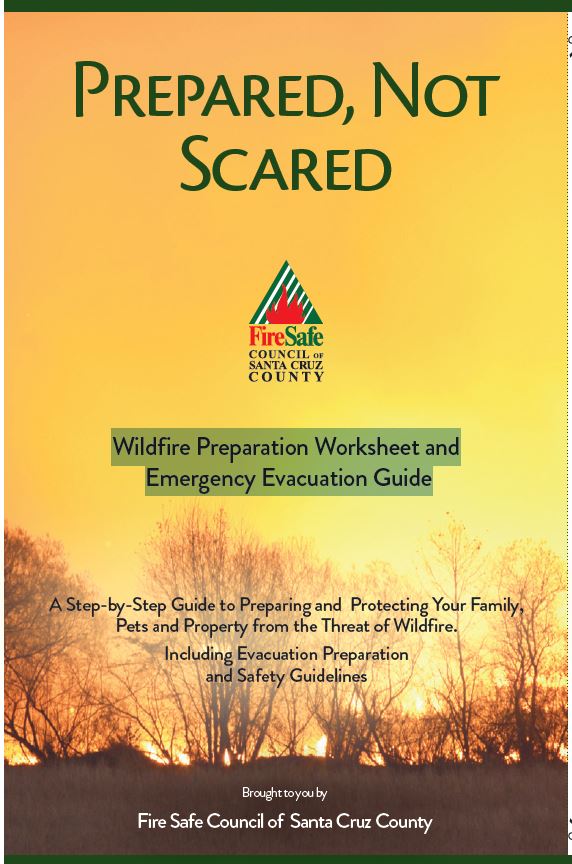Reducing Wildfire Risks
What are the primary threats to homes during a wildfire?
Living within City limits, we are not typically threatened by wildfires. But after recent firestorms in California, it's very apparent that urban areas are also at great risk during a firestorm.
Research around home destruction vs. home survival in wildfires point to embers and small flames as the main way that the majority of homes ignite in wildfires. Embers are burning pieces of airborne wood and/or vegetation that can be carried more than a mile through the wind can cause spot fires and ignite homes, debris and other objects.
Learn more from the Fire Safe Santa Cruz County Council.
General Guidelines for Structure Hardening Against Wildfire
- Create adequate defensible space.(PDF, 3MB)
- Choose fire-resistant building materials.
- Keep gutters, roofs, and decks clear of needles, leaves, and other debris.
- Clear under your deck if the space underneath has any debris (man-made or natural).
- Place woodpiles and propane tanks away from buildings.
- Do not store tools, equipment, or junk piles adjacent to house.
- Ensure that if fences were to catch fire, they would not guide flames to your house.
Home Hardening
Reduce Your Wildfire Risk and Become a Firewise Community
 The Firewise USA Website of the NFPA provides Wildfire Risk Reduction Steps to make your home safer during a wildfire.
The Firewise USA Website of the NFPA provides Wildfire Risk Reduction Steps to make your home safer during a wildfire.
Wildfire Preparation Worksheet and Emergency Evacuation Guide
 Wildfire Preparation Worksheet and Emergency Evacuation Guide(PDF, 1MB)
Wildfire Preparation Worksheet and Emergency Evacuation Guide(PDF, 1MB)
A Step-by-Step Guide to Preparing and Protecting Your Family, Pets and Property from the Threat of Wildfire, including Evacuation Preparation and Safety Guidelines.
New Requirements for Wildland Urban Interface Fire Areas
WUI Building Construction Requirements
2019 California Fire Code, Chapter 49 & California Building Code, Chapter 7A
- Local AHJ (authority having jurisdiction) established high fire hazard severity zone (CWPP)
- References 2019 California Building Code, Chapter 7A
- References California Residential Code, Section R327
- Applies to all new construction and all new materials used for remodels and construction.
- Includes fire- or flame-resistant roofing material, roof vent coverings/screens, exterior siding, skylights, windows, doors and decks
- Applies to accessory structures on the same property
- Fire exposure and acceptance criteria for fire resistance specified in SFM, NFPA, ASTM and/or UL
UI Vegetation and Fuel Management Requirements
2019 California Fire Code, Chapter 49 & Public Resource Code, Section 4291
- Local AHJ (authority having jurisdiction) established high fire hazard severity zone (CWPP)
- References Public Resources Code, Section 4291
- Fuel management begins 100 feet from the structures(s) with the first 30 feet requiring the most intense management
- Remove trees/branches that extends within 10 feet of the outlet of chimney/stovepipe
- Maintain vegetation adjacent to overhanging of a building
- Maintain the roof of a structure free of leaves, needles or other vegetative materials
See WUI maps below to determine if your property is in a WUI zone. If you still are not sure, please email the Fire Prevention Technician.
Is your property in the WUI? View the Map.
Reference Santa Cruz Municipal Code 19.05.270 SECTION 4901.3 IS ADDED – REQUIREMENTS FOR WILDLAND-URBAN INTERFACE FIRE AREAS.